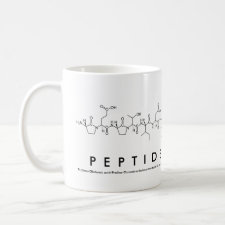
Authors: Wang CY, Howell M, Raulji P, Davis Y, Mohapatra S
Article Title: Preparation and Characterization of Molecularly Imprinted Polymeric Nanoparticles for Atrial Natriuretic Peptide (ANP).
Publication date: 2011
Journal: Advanced Functional Materials
Volume: 21
Issue: (23)
Page numbers: 4423-4429.
DOI: 10.1002/adfm.201100946
Alternative URL: https://www.researchgate.net/publication/235786978_Preparation_and_Characterization_of_Molecularly_Imprinted_Polymeric_Nanoparticles_for_Atrial_Natriuretic_Peptide_ANP
Abstract: Natriuretic peptide receptor A (NPRA), the receptor for the cardiac hormone atrial natriuretic peptide (ANP), is expressed abundantly on cancer cells and disruption of ANP-NPRA signaling inhibits tumor burden and metastasis. Since antagonists of NPRA signaling have not provided reproducible results, we reason that a synthetic neutralizing antibody to ANP, which has high selectivity and affinity for ANP, can be used to regulate ANP levels and attenuate NPRA signaling. In this study, we prepare molecularly imprinted polymeric nanoparticles (MIPNPs) for ANP using a short peptide of ANP as the template and determine their binding affinity and selectivity. The MIPNPs are prepared by precipitation polymerization using NH2-SLRRSS-CONH2, which is a short peptide from ANP, as a template, methacrylic acid and N-isopropylacrylamide as functional monomers, and bis-acrylamide as a crosslinker. The average diameters of the MIPNPs and of non-imprinted nanoparticles (NIPNPs) in water are 215.8 ± 4.6 nm and 197.7 ± 3.1 nm respectively. The binding-isotherm analysis shows that the MIPNPs have a much-higher binding affinity for the template peptide and ANP than the NIPNPs. Scatchard analysis gives an equilibrium dissociation constant, Kd, of 7.3 x 10-6 M with a binding capacity of 106.7 μmol g-1 for the template peptide and a Kd of 7.9 x 10-6 M with a binding capacity of 36.0 μmol g-1 for the ANP. Measurements of the binding kinetics reveal that MIPNPs reach protein-adsorption equilibrium in 30 min. The MIPNPs are found to have a high specificity for ANP with little affinity for BSA or scrambled ANP peptide. The MIPNPs also recognize and adsorb ANP in cell-culture medium spiked with ANP and in human plasma. Taken together, these results indicate that the MIPNPs have a high affinity and selectivity for ANP and can be used as a synthetic antibody for modulating ANP-NPRA signaling in cancers
Template and target information: Peptide, Atrial Natriuretic Peptide, ANP
Author keywords: atrial natriuretic peptides, natriuretic peptide receptor A, Molecularly imprinted polymers, cancer, ANP-NPRA signaling



Join the Society for Molecular Imprinting

New items RSS feed
Sign-up for e-mail updates:
Choose between receiving an occasional newsletter or more frequent e-mail alerts.
Click here to go to the sign-up page.
Is your name elemental or peptidic? Enter your name and find out by clicking either of the buttons below!
Other products you may like:
 MIPdatabase
MIPdatabase









